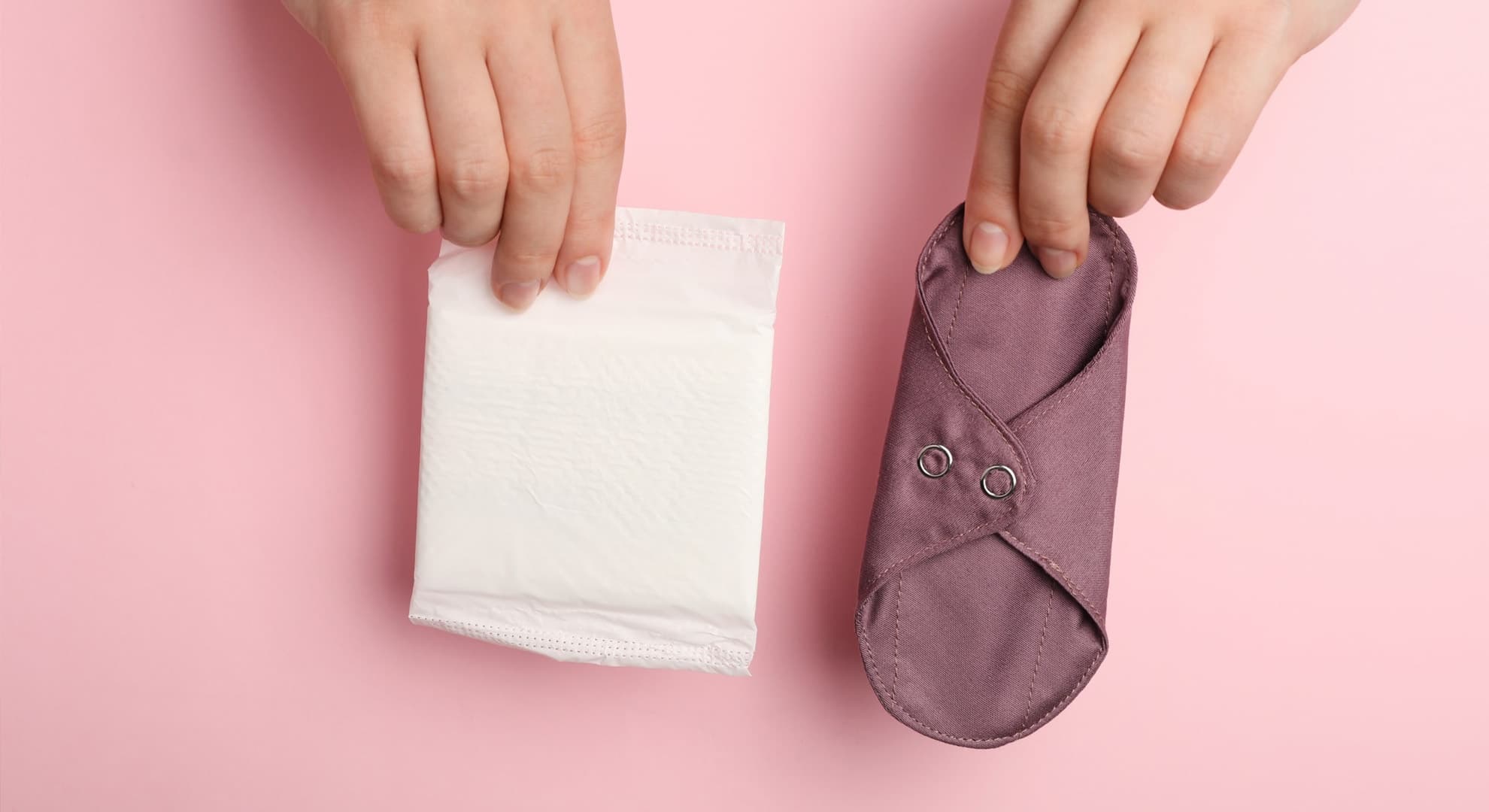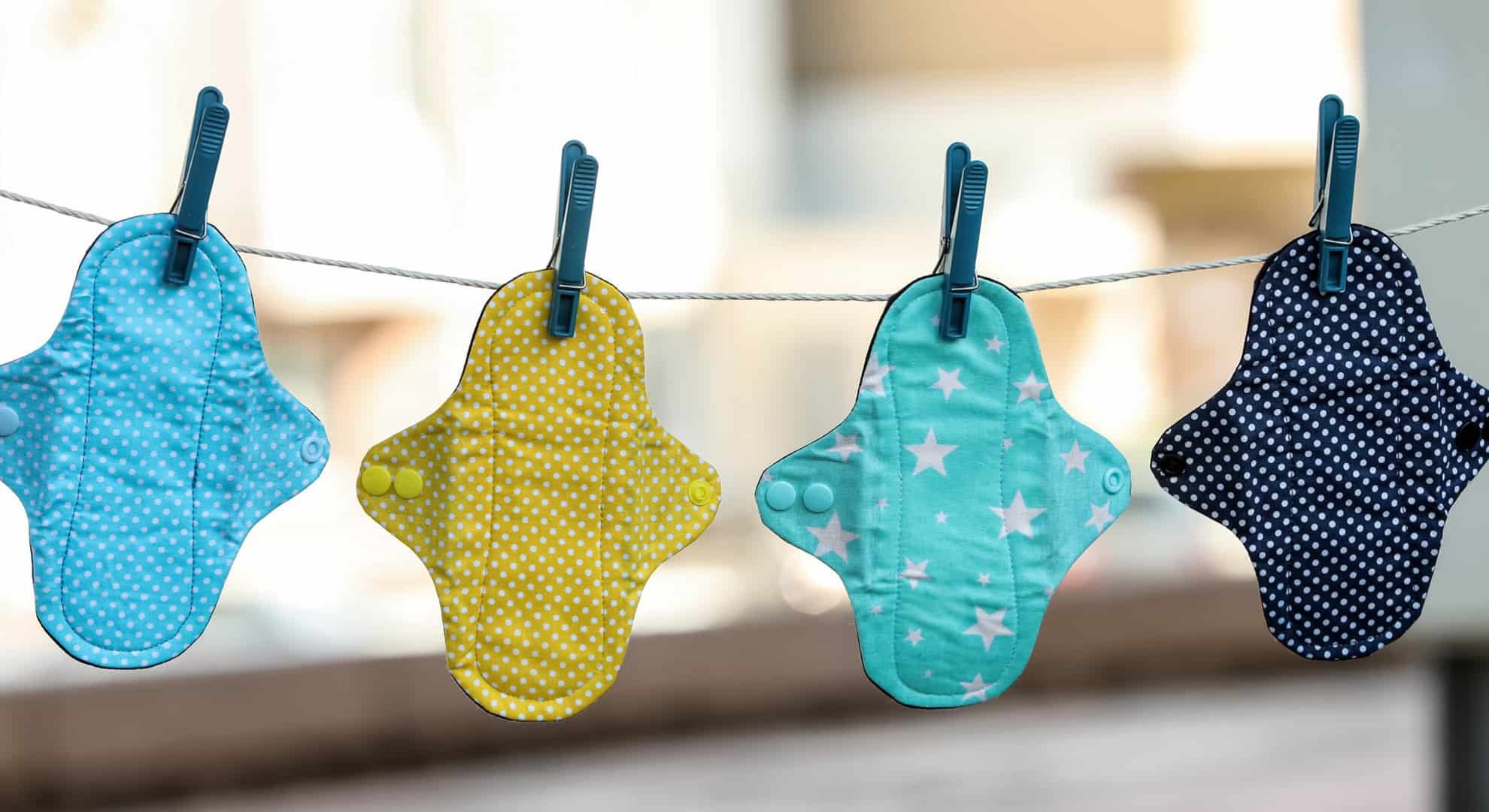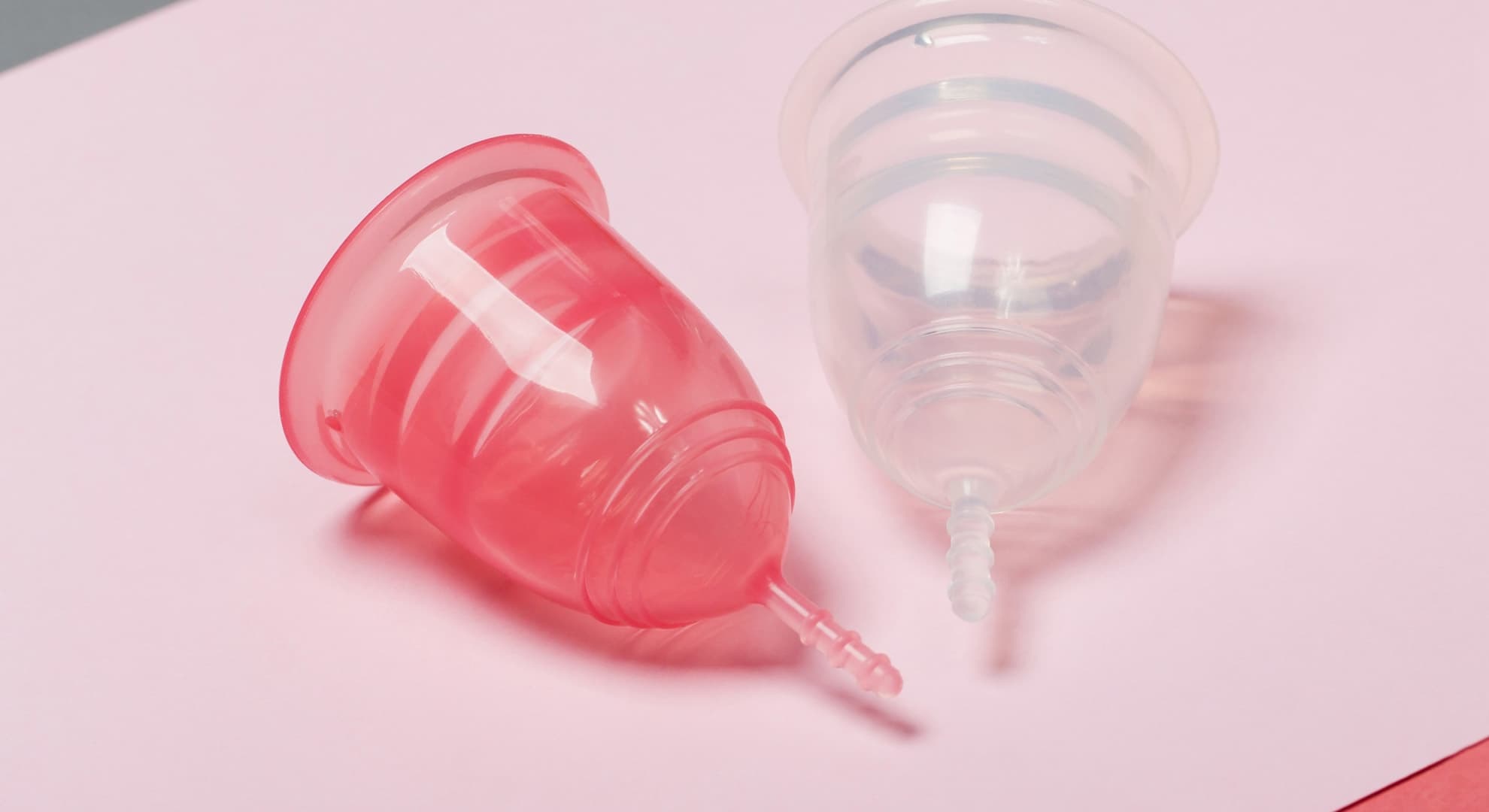
Reusable cloth pads
Reusable pads are comfortable, easy to clean, and you can wear them for up to five years, making them good for the planet and your purse. Find out If reusable pads are right for you.
Reusable cloth pads
Reusable pads come in all sorts of shapes, sizes and absorbencies – just like their plastic cousins. However, unlike disposables, they won’t announce themselves with the distinctive crinkle of a plastic wrapper echoing around the office toilet cubicles. You can also say goodbye to those pesky adhesive strips that always seem to have trouble sticking where you want them.
Not to mention the environmental impact – according to Marine Conservation Society, research, one pack of disposable pads can contain the equivalent plastic as four carrier bags.
Easy to clean, reusable pads just need a quick rinse in cold water until water runs clear and then popped into the washing machine along with the rest of your clothes.

Lorna's thoughts on reusable cloth pads
I was genuinely shocked to realise how much plastic is in pads, like four plastic bags worth in one pack, and when you tot up the amount I’ve used since I was 14, it’s a real eye-opener. So, in line with trying to switch to more sustainable options generally in my life, I thought I’d give reusables a shot.
For my first pack of five pads with a zippy carry bag, it cost £45, which seemed fairly pricey. Then I figured out that over five years (the estimated lifespan of pads) it’d cost £0.75 a month, so financially it made sense too.
They are super comfy, and the absorbency is great - I don’t even notice much of the blood as the pad is dark grey. They also stay put – each pad has poppers (instead of sticky wings) to help them stay in place. And washing Isn’t the big chore I imagined – I give them a rinse after each use and chuck them in a normal wash with other clothes.

Reusable cloth pad benefits
- Reusable cloth pads can last up to five years – costing on average £10 per year to own, compared to spending £45 a year on single-use pads.
- Choice – the pads come in a variety of shapes, sizes, colours, patterns and textures. Do your disposables do that?
- Soft, comfy and made from high-performing fabric to prevent leaks. Most even come with wings secured by poppers to hold them in place.
- Toxin-free, unlike disposable products that are made from plastic and bleached to give their bright white appearance.
Reusable cloth pad FAQs
What makes them different from single-use pads?
Apart from the obvious benefit that you don’t throw away reusable pads, there are several differences. Some of the main ones are:
- Cloth pads have wings that snap into place; there’s no adhesive like with disposable pads.
- Cloth pads tend to ‘breathe’ better than disposables because they aren’t made of plastic.
- Cloth pads come in a variety of colours and patterns, so you can choose a product that is in your style and suits your needs.
How do I wash them?
The easiest way to clean your pads is to rinse them in cold water then pop them into the washing machine. You can wash them on cold or warm settings; just avoid using hot water as they have the potential to set stains. Some people prefer putting them in a wash bag, so they’re separate from the rest of the load. Then, you can either air dry the pads or tumble dry on the low setting.
What are pads made of?
Pads are mainly made from cotton, with a small amount being made from bamboo fabric.
How many will I need?
Typically, you will need between one to six reusable pads a day depending on your flow. How many you use depends on your flow, for example, you will use less on lighter days. You can also buy longer ones for during the night.
How often do I need to replace them?
Most cloth pads are estimated to last up to five years if they’re properly cared for. Some people say theirs last even longer than that.
Do they smell?
The good thing is cloth pads tend to stay fresher than disposable pads. This is because the fabric breathes, allowing moisture to evaporate. Less moisture equals fewer bacteria to produce unwanted smells. If you do notice an odd smell, common bacterial imbalances could be to blame. If you have any concerns, have a chat with your doctor.
What if I need to change one and I am out and about?
Thanks to the wings with snaps on most pads, they fold up into perfect little squares you can pack into your bag. Some brands sell waterproof bags with pads so when it’s your period, you can discreetly roll them up and store them without any fuss.
How do I find the pad that works for my flow?
Typically, the most important factor is the absorbency level of the pad. You can go with a thinner pad with lighter coverage if you have very light flow or just need a backup for a menstrual cup or tampons. You might want to choose thicker pads if you have a heavier flow. One way to get started is to measure the disposable pads that you like and order similar sized cloth pads so that you feel comfortable. You can also get different lengths for day and night.
Where can I get them?
You can buy reusable pads from lots of different websites, health stores and eco-friendly shops.
In Scotland, as well as our campaign partners Hey Girls, there are other Scottish suppliers of pads market including Live by Nora as well as up and coming organisations Sanitree and Lilypads.

Menstrual cups
Menstrual cups are one of the most sustainable options when it comes to reusable period products and can last up to 10 years. Find out how to use them.
